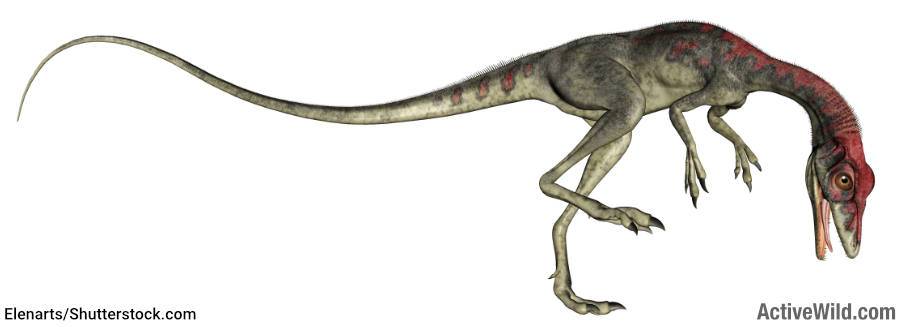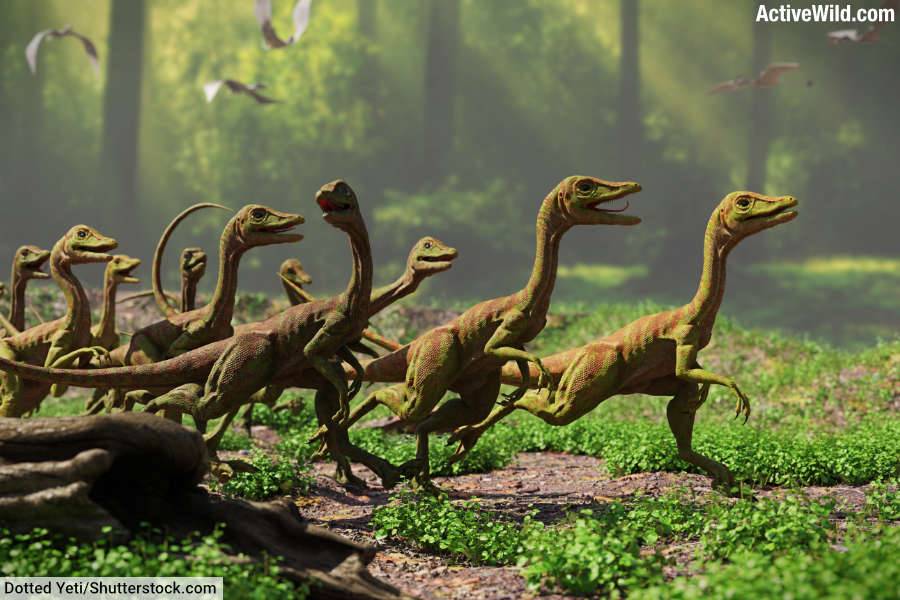
Compsognathus, a small but fascinating dinosaur from the Late Jurassic period, has captivated dinosaur enthusiasts since its discovery in the mid-19th century.
Compsognathus is primarily known for its small size; for many years it was the smallest-known dinosaur, and is often compared to a modern chicken in size (smaller dinosaurs, such as Microraptor and Parvicursor have subsequently been discovered).
All that is known about Compsognathus comes from two well-preserved fossils, one of which was found in the Solnhofen limestone of Germany; the other in the Portland limestone of France.
Read on to find out more facts about this diminutive dinosaur…
Compsognathus Facts
- Type of Dinosaur: Theropod
- Diet: Carnivore
- Continent(s) Found: Europe (specifically in regions that are now Germany and France)
- Length: Approximately 1 meter (3.3 feet)
- Height: 20-30 cm (8-12 inches)
- Weight: Around 2.5 kilograms (5.5 pounds)
- Period: Late Jurassic, approximately 150 million years ago
What Did Compsognathus Look Like?

Compsognathus was a small, nimble theropod dinosaur known for its slender build and relatively diminutive size compared to many of its contemporaries.
This Late Jurassic dinosaur measured approximately 1 meter (3.3 feet) in length. It is often described as being “chicken-sized”, but this comparison may be based on a juvenile specimen. It had a lightweight frame, with an estimated weight of around 2.5 kilograms (5.5 pounds).
Compsognathus was characterized by its elongated neck, small head with sharp, serrated teeth, and long, tapering tail, which helped it maintain balance while running.
The limbs of Compsognathus were well-suited for a carnivorous lifestyle, with strong, clawed hands that could grasp prey. Like most other theropods, it likely had three digits per hand, although fossil evidence suggests that the third digit may either have been very small or not present at all.
Did Compsognathus Have Feathers?
There is no evidence that Compsognathus itself had feathers, although some dinosaurs believed to have been related to Compsognathus did have feathers.
What Does The Name Compsognathus Mean?

The name Compsognathus comes from Greek and means “elegant jaw” or “delicate jaw.” It is derived from the Greek words “kompsos” (κομψός), meaning “elegant” or “refined,” and “gnathos” (γνάθος), meaning “jaw.” This name reflects the dinosaur’s relatively delicate and slender jaw structure, which distinguishes it from other theropods.
What Type Of Dinosaur Was Compsognathus?
Compsognathus was a small theropod dinosaur. Theropods are a group of bipedal saurischian dinosaurs characterized by hollow bones and three-toed limbs.
Compsognathus belonged to the family Compsognathidae, known for their small size and carnivorous diet. Other members of this family include Sinosauropteryx and Juravenator.
These dinosaurs were agile predators, relying on their speed and dexterity to hunt small vertebrates and insects.
Where Did Compsognathus Live?
To date, two specimens of Compsognathus have been found: one in Germany and one in France.
Compsognathus Discovery

The first specimen of Compsognathus was discovered in 1859 in the Solnhofen limestone of Bavaria, Germany. This specimen was acquired by Dr. Joseph Oberndorfer, a German physician and paleontologist.
A second, larger, specimen was discovered later in 1971 in the Portland limestone of southeastern France.
When Did Compsognathus Live?
Compsognathus lived during the Late Jurassic period, approximately 150 million years ago.
What Dinosaurs And Other Animals Did Compsognathus Live With?
The Solnhofen limestone in Bavaria, Germany, is renowned for its exceptionally well-preserved fossils from the Late Jurassic period. The best-known dinosaur to have been discovered in the formation is Archaeopteryx.
A pivotal species in the study of the evolution of birds from theropod dinosaurs, Archaeopteryx had feathers and bird-like characteristics, but also retained many dinosaurian traits.
The Solnhofen limestone has yielded a wealth of other prehistoric life forms, including pterosaurs like Rhamphorhynchus and Pterodactylus, various marine reptiles, and numerous invertebrates and fish, offering a detailed glimpse into the ecosystem of the Late Jurassic period.
Discover More About Dinosaurs With Active Wild
The post Compsognathus Facts & Pictures, A Small Jurassic Predatory Dinosaur appeared first on Active Wild.